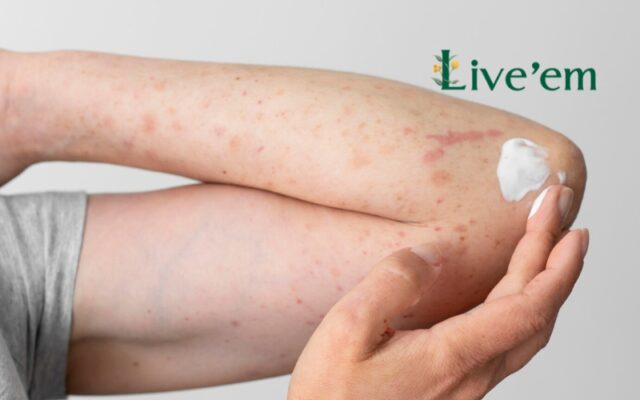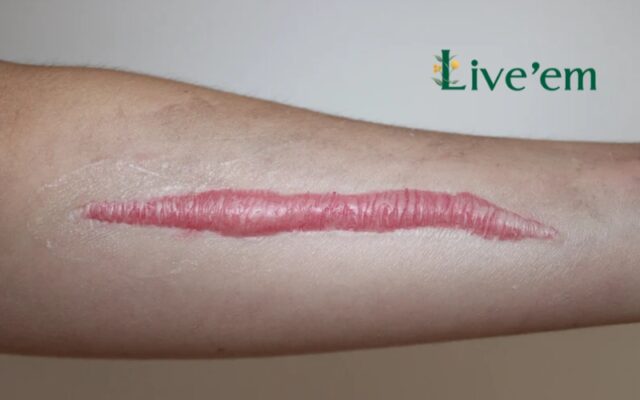Understanding Scar Types and Their Causes: “Know Your Enemy to Win Every Battle”
To treat scars effectively, it’s essential to understand their different types and the reasons they form.
Common Types of Scars:
- Keloid Scars: Thick, raised scars that extend beyond the original wound due to excessive collagen production.
- Hypertrophic Scars: Similar to keloids but remain within the original wound area.
- Atrophic (Depressed) Scars: Indented scars caused by tissue loss, often seen after acne or chickenpox.
- Contracture Scars: Tightened scars that can restrict movement, commonly resulting from severe burns.
- Acne Scars: Usually atrophic or pigmented scars formed due to inflammation in hair follicles.
- Post-Surgical Scars: Scars resulting from surgical incisions, which may appear as keloid, hypertrophic, or flat scars.

Causes of Scar Formation:
- Extent of Skin Damage: The deeper the wound, the higher the risk of scarring.
- Genetics: Some individuals are more prone to keloid or hypertrophic scars due to their genetic makeup.
- Wound Care: Improper care can increase the risk of infection and worsen scarring.
- Personal Skin Type: Some people naturally produce more collagen, leading to raised scars.
Effective Scar Treatment Methods: “A Variety of Options for Different Scar Types”
Today, various treatments are available to address different scar types and severity levels.
Treatment Options:
- Topical Scar Creams & Gels: Products containing silicone, Vitamin E, and onion extract can soften scars, reduce itchiness, and fade pigmentation.
- Laser Therapy: Uses laser beams to break down scar tissue, stimulate collagen production, and promote skin regeneration.
- Corticosteroid Injections: Directly injected into raised scars to reduce inflammation and flatten keloid and hypertrophic scars.
- Surgical Scar Removal: Recommended for large, contracture, or functionally impairing scars.
- Microneedling: Uses tiny needles to create micro-injuries, triggering skin regeneration and improving scar appearance.
- Cryotherapy: Uses liquid nitrogen to freeze and destroy keloid scar tissue.
- Proper Wound Care: Keeping wounds clean reduces infection risk and prevents excessive scarring.

Post-Treatment Skincare: “Proper Care for Faster Scar Healing”
After scar treatment, proper skincare is crucial to achieving the best results and preventing recurrence.
Essential Skincare Steps:
- Regular Moisturization: Use fragrance-free moisturizers to keep the skin soft and elastic.
- Sun Protection: Apply sunscreen with SPF 30 or higher to prevent darkening of scars.
- Avoid Picking or Scratching: This can cause further skin damage and worsen scarring.
- Use Scar-Fading Products: Ingredients like Vitamin C and Niacinamide help brighten skin and fade scars.
- Healthy Diet: Eat foods rich in Vitamin C, Vitamin E, and protein to support skin repair.
During scar treatment, you may consider using “Live’em Kelo-H ProTherapy.” This product contains a special silicone-based formula that controls excessive collagen production, helping flatten keloid, hypertrophic, acne, new, and old scars. It is free from corticosteroids, making it safe for long-term use, including for children and pregnant women. For enhanced results, you can combine it with Live’em DERMA+ LIGHTENING or Live’em DERMA+ SOOTHING.

Conclusion:
Scar treatment requires patience and proper care. By understanding different scar types, choosing the right treatment method, and following a proper skincare routine, you can restore smooth, confident skin.
Product Suggestions: Live’em Kelo-H ProTherapy
Note:
- Combine with Live’em DERMA+ LIGHTENING for enhanced brightening and even skin tone.
- Use with Live’em DERMA+ SOOTHING to reduce bruising, fade post-acne marks, and accelerate skin recovery.


 中文 (中国)
中文 (中国) Tiếng Việt
Tiếng Việt



